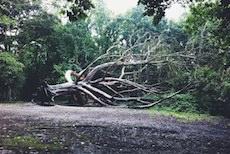Located five miles north of the City of London, straddling the North London Boroughs of Camden and Barnet, Hampstead Heath’s 800 acres are set across a sandy ridge, with the lower parts of the Heath turning to London clay. It is bounded by two diverted streams of the River Fleet (now driven underground), which form a series of ponds on the eastern and western boundaries of the park. Walking on the Heath today involves trudging through vastly different local ecologies—from man-made heathland and agricultural grassland, to ancient forest and overgrown hedgerow—calling to attention the ways this place has been shaped not solely by human domestication, but by its array of plant, animal, mineral, and fungal inhabitants. This palimpsestic nature of the Heath means that any engagement with it ought to engage with the totality of its actors and its complex history of change.
Previous studies of the Heath have underscored its importance in the cultural history of London, while others have explored the Heath’s rich natural history. By drawing these two approaches together in an environmental history, this project attempted to bridge the gap between the cultural and the natural. Jung Lee enriched this environmental history of the ways in which both human and nonhuman have co-constituted the Heath by drawing on current theories of environment provided by aesthetics and work in new materialism (focussing on nonhuman agency) and multispecies ethnography (which traces the roles of nonhumans in human contexts). Jung Lee drew on recent theories in environmental aesthetics that focus on an immersive, kinaesthetic notion of aesthetic experience. In particular, underscored were the ways in which environmental aesthetics benefits from engagement with a specific, complex case study, in which not only the human but also the nonhuman become active in shaping an aesthetic object and its history.

